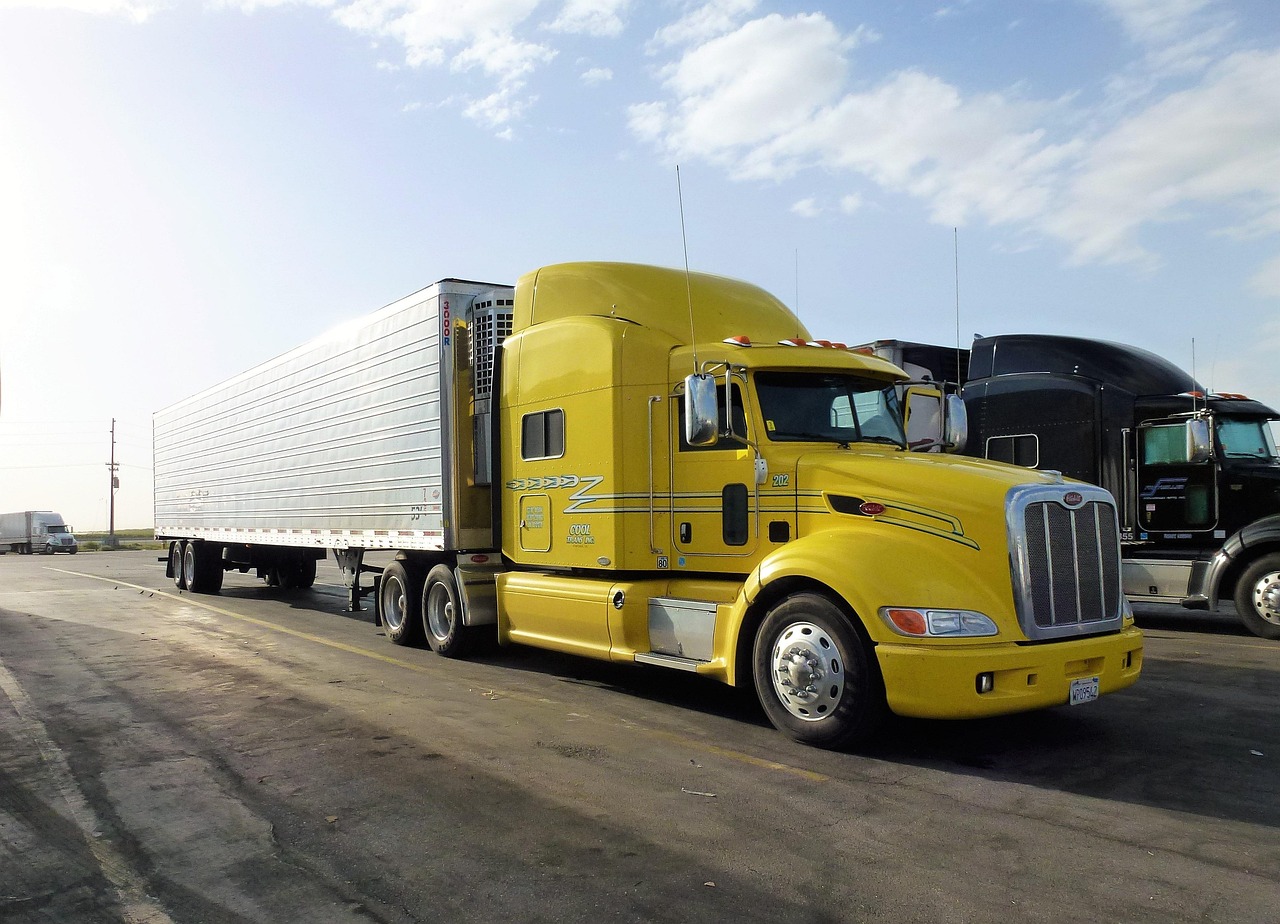Navigating the trucking industry can be challenging, especially for newcomer drivers. One key to success in the sector is understanding how freight rates are calculated. This knowledge can help ensure fair compensation for shipping services and the profitability of your trucking operations.
The article reviews the factors that impact truck rates, how to calculate them, and ways to secure the vest rates while staying adaptable to market shifts. Whether you’re starting your way in trucking or looking for ways to improve earnings, mastering these components is a vital step to success.

What are Truck Freight Rates?
Truck freight rates are the charges applied to transport goods with the use of freight trucks. They are an essential part of the freight shipping process and are impacted by several factors. These factors include the type of shipment being hauled, distance, and other services. For truck drivers, especially newcomers to the industry, understanding the complex process of freight rate calculation is essential for building a successful trucking business.
To obtain the best trucking rate, drivers should consider their shipping costs, including fuel costs and labor. Staying informed about industry news, trends, and current trucking rates helps ensure competitive pricing. Collaborating with freight brokers and tapping into a vast network of carriers can provide access to consistent shipments, enabling newcomers to secure competitive trucking rates.
Accurately calculating rates involves evaluating how much room or space (in cubic feet) a shipment will need and estimating costs based on distance, fuel, and added services. These elements collectively influence the total cost of delivery. Transparent pricing and understanding factors like freight classification and shipping details are essential for fostering trust and attracting repeat business.
For newcomers aiming to make informed decisions, offering transparent rates and focusing on delivering quality service for both small businesses and larger clients ensures steady growth in the trucking industry.
Understanding the Factors That Influence Truck Rates
A combination of factors shapes truck rates. The tricky thing is that most of these factors are changing in response to market fluctuations. For drivers and fleet managers, having a clear grasp of these factors is essential to set realistic pricing and meet client expectations.
Knowing what impacts your earnings can help you make smarter decisions, whether you’re negotiating with brokers or optimizing your routes.
Some key factors that influence trucking rates include:
Market demand. Peak seasons or high-demand periods drive rates up. At the same time, slow seasons may force drivers to accept lower freight trucking rates to stay competitive. Recognizing market cycles can help you schedule your loads for maximum profit.
Freight class. The National Motor Freight Classification (NMFC) can help determine freight shipping rates based on the shipment details, such as size, weight, and handling needs. For example, reefer freight rates are higher because of the equipment and additional experience needed.
Distance and route complexity. Longer distances, challenging routes, and shipments requiring special permits contribute to higher costs. However, handling specific cargo types, such as hazardous materials, may require additional skills and permits.
Fuel prices and surcharges. Fuel expenses can vary widely depending on location and market trends. Thus, staying updated on current average trucking rates and fuel variability is essential for accurate pricing.
Carrier availability. Regions with fewer carriers or drivers often offer higher rates due to limited capacity. However, markets with multiple carriers may involve more competition and lower rates.
Additional services. Expedited deliveries, special handling, or shipping hazardous or overweight freight can increase rates. Understand what you can handle and charge accordingly for these added services.
Regulations and compliance costs. Staying compliant with weight restrictions, permits, and international shipment rules can increase operating costs. Thus, these expenses should be factored into your pricing.
By considering these factors, truck drivers and logistics businesses can negotiate better rates and make informed decisions about what loads to accept, which routes to take, and how to manage expenses.
Calculating Truck Rates: Key Components
Determining truck rates requires careful evaluation of fixed and variable expenses. By breaking down these components, trucking companies can establish a clear framework for calculating rates, ensuring they remain competitive while covering expenses and achieving profitability.
Fixed Costs
Fixed shipping costs involve constant expenses regardless of the miles driven or loads carried. These expenses include:
Truck payments. Lease or purchase payments for freight trucks.
Insurance costs, including coverage for trucks, cargo, and liability, are essential for operating in compliance with regulations.
Licensing and permits. Regular fees for operating authority, such as International Fuel Tax Agreement (IFTA() compliance or international licenses.
Administrative costs. Expenses like office operations and bookkeeping.
Fixed costs are consistent. Trucking businesses and carriers must factor these into freight rates to ensure profitability even during low-demand periods.
Variable Costs
These expenses fluctuate in response to operational factors and shipment specifics. They include:
Fuel is a major component of shipping expenses. Fuel expenses are influenced by distance, fuel efficiency of a truck, and fuel prices.
Maintenance and repairs. Regular vehicle upkeep is also essential. These expenses can be higher for older trucks or routes with high mileage.
Accurate tracking of variable costs is essential for calculating trucking rates and maintaining transparent pricing with clients.
Profit Margin Considerations
The profitability of your trucking operations depends on balancing costs with competitive pricing. The following factors should be considered to achieve a reasonable profit margin.
Market rates. Staying updated on current rates and pricing trends to align with client expectations.
Extra services. Charging additional rates for expedited shipping, special accommodations, or handling hazardous or overweight cargo.
Rater Per Mile Formula
One of the main approaches to rate calculation is the rater per mile formula. This formula factors total expenses divided by the estimated mileage for a route.
To calculate your mile rates, add up fixed and variable costs, add the desired profit, and divide by the total miles driven.
This rate can be adjusted to reflect demand, delivery speed, and other influencing factors.
How to Obtain the Best Rates
market dynamics by leveraging the right equipment and services. For newcomers and experienced drivers, obtaining trucking rates can boost profitability while meeting client needs.
To ensure you’ll have the best rates, you can follow these tips:
Establish relationships with freight brokers. Freight brokers connect drivers and trucking companies with shippers looking for reliable carriers. Building strong ties with brokers can provide steady shipments at competitive rates.
Negotiate directly with clients. Engaging small business owners or repeat clients allows you to offer customized pricing that accounts for their needs while ensuring profitability.
Leverage technology. You can use freight matching platforms and trucking software to access live loads and compare freight rates across several regions. This helps find the most profitable rates for you.
Maximize fuel efficiency. Reducing fuel consumption can increase profit. Route optimization can keep fuel costs down, reduce operating costs, and offer better rates.
Focus on niche services. Specializing in unique services like reefer freight, flatbeds, or last-mile deliveries allows you to charge a premium for expertise in niche areas.
Are you looking to secure the best freight rates while staying compliant and operating efficiently in the ever-changing trucking industry? At QuickStart, we understand the challenges drivers and trucking companies face, from managing complex licensing requirements to staying on top of permitting and regulatory changes. Our team specializes in streamlining these processes, allowing you to focus on keeping your freight trucks on the road and your business thriving.
Whether you’re a newcomer navigating the specifics of calculating freight rates or an experienced driver seeking operational support, QuickStart is here to provide personalized solutions. Don’t let administrative hurdles slow you down — contact us today and simplify your journey toward profitability and sustainable growth in the competitive trucking market!
Types of Trucking Services
Understanding the types of trucking services allows you to meet market demand and needs, enhancing your ability to secure competitive freight rates. Drivers can also increase their earnings by tapping into multiple niches and optimizing operational efficiency.
Dry van trucking is the most common form of trucking for general freight. Rates for this service are usually steady, making it a reliable entry point for newcomers.
Reefer trucking specializes in transporting temperature-sensitive goods and often commands higher rates. However, it requires accuracy and experience to ensure timely delivery and reliable handling.
Flatbed trucking is used for oversized or heavy loads. In this case, truck drivers should also be accurate, checking the cargo during the route. Freight costs vary depending on the cargo and routing complexity.
Heavy haul trucking refers to shipping large or heavy freight. This freight often requires additional permits, which increase trucking costs and rates.
Expedited shipping refers to fast, time-sensitive deliveries. Higher rates are typical due to priority handling and limited downtime.
Hazmat trucking. Transporting hazardous freight requires certifications and compliance with safety regulations. Hazmat trucking usually brings higher rates.
How to Adjust Rates for Market
Adapting truck rates to reflect changing market conditions is essential for maintaining profitability and staying competitive. Factors such as seasonal demand, fluctuating costs for fuel, and client negotiations significantly affect trucking operations. Understanding how to adjust your rates ensures you remain flexible while covering costs and meeting client expectations.
Seasonal adjustments. The demand for shipping services often varies by season, including peak seasons and slow periods. During holidays or harsh seasons, the demand for shipping goods increases, driving up freight shipping costs. Adjusting rates upward during these times ensures you capitalize on higher demand. During off-peak seasons, offering competitive pricing or discounts for multiple shipments can help secure business despite lower demand.
Fuel price variability. Fuel is one of the largest variable expenses in trucking. Its fluctuating process directly impacts rate calculations. Incorporating dynamic fuel surcharges into your pricing allows you to adjust rates as fuel expenses change. Besides, optimizing routes and reducing empty miles can mitigate rising fuel expenses, helping you maintain stable freight rates.
Negotiating rates with brokers and shippers. Building strong relationships with brokers and shippers allows for better negotiation opportunities. To justify higher rates, highlight your reliability, safety record, and ability to handle special shipments. Using market data on trucking rates is essential to negotiate confidently and align your prices with the industry average.
Conclusion
Mastering freight rates involves more than setting prices. It also involves understanding the costs and factors that affect your freight trucking operations. From calculating fixed and variable costs to knowing when and how to adjust for market changes, understanding these elements will help you make more informed decisions and secure competitive rates.
With these insights in hand, you’re equipped to handle fluctuations, ensure efficient deliveries, and run successful trucking operations. If you’re looking for guidance or support on your trucking journey, QuickStart is here to help streamline your business operations and keep you on track for long-term success.
Contact us today to experience the difference in your trucking operations!




